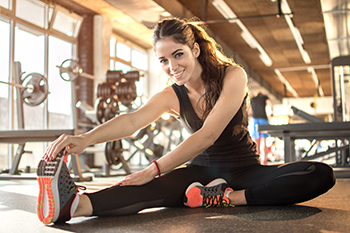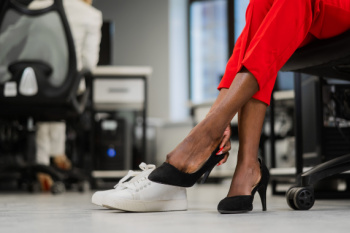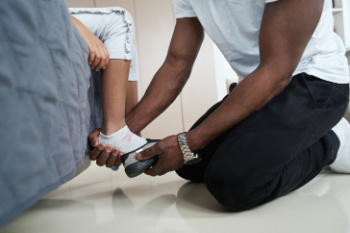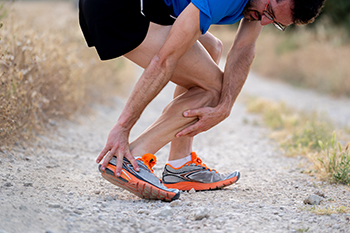Connect With Us
Blog
Items filtered by date: June 2025
Stretches to Relieve Pain From Long Hours on Your Feet

Spending long hours standing or walking can lead to foot pain, but regular foot stretches can help ease discomfort. Toe lifts strengthen foot muscles by raising the toes while keeping the heel on the ground. A sole stretch targets the arch by pulling the toes back gently. Toe scrunches build muscle by picking up small objects with your toes. The runner’s stretch loosens tight calf muscles and the Achilles tendon. Additionally, a fascia roll involves gently rolling the sole over a ball to massage the plantar fascia. These stretches improve flexibility, reduce tension, and support recovery. A podiatrist can treat various foot conditions, and recommend the best stretches for your condition, while addressing any underlying issues. If foot pain persists despite stretching, it is strongly suggested that you schedule a visit with a podiatrist for a personalized care plan.
Stretching the feet is a great way to prevent injuries. If you have any concerns with your feet consult with Phyllis Weinstein, DPM from California. Our doctor will assess your condition and provide you with quality foot and ankle treatment.
Stretching the Feet
Being the backbone of the body, the feet carry your entire weight and can easily become overexerted, causing cramps and pain. As with any body part, stretching your feet can serve many benefits. From increasing flexibility to even providing some pain relief, be sure to give your feet a stretch from time to time. This is especially important for athletes or anyone performing aerobic exercises, but anyone experiencing foot pain or is on their feet constantly should also engage in this practice.
Great ways to stretch your feet:
- Crossing one leg over the others and carefully pull your toes back. Do 10-20 repetitions and repeat the process for each foot
- Face a wall with your arms out and hands flat against the wall. Step back with one foot and keep it flat on the floor while moving the other leg forward. Lean towards the wall until you feel a stretch. Hold for 30 seconds and perform 10 repetitions for each foot
- Be sure not to overextend or push your limbs too hard or you could risk pulling or straining your muscle
Individuals who tend to their feet by regular stretching every day should be able to minimize foot pain and prevent new problems from arising.
If you have any questions please contact our office located in Temple City, CA . We offer the newest diagnostic and treatment technologies for all your foot and ankle needs.
Do You Suffer From Painful Feet?
Choosing High Heels for Comfort and Foot Health

Wearing high heels does not have to mean sacrificing foot comfort or health. Choosing the right pair starts with ensuring the correct shoe size to avoid pressure on the toes and heel. Look for a well cushioned insole that provides support and absorbs shock. A thicker heel offers greater stability and reduces the risk of ankle injuries. Paying attention to heel height and avoiding shoes with an excessively pointed toe box can also help reduce strain. A podiatrist can offer guidance on selecting heels that match your foot structure and prevent pain or injury. If you have foot pain from wearing high heels, it is suggested that you schedule an appointment with this type of doctor who can treat various foot conditions, and guide you on correct footwear.
High heels have a history of causing foot and ankle problems. If you have any concerns about your feet or ankles, contact Phyllis Weinstein, DPM from California. Our doctor can provide the care you need to keep you pain-free and on your feet.
Effects of High Heels on the Feet
High heels are popular shoes among women because of their many styles and societal appeal. Despite this, high heels can still cause many health problems if worn too frequently.
Which Parts of My Body Will Be Affected by High Heels?
- Ankle Joints
- Achilles Tendon – May shorten and stiffen with prolonged wear
- Balls of the Feet
- Knees – Heels cause the knees to bend constantly, creating stress on them
- Back – They decrease the spine’s ability to absorb shock, which may lead to back pain. The vertebrae of the lower back may compress.
What Kinds of Foot Problems Can Develop from Wearing High Heels?
- Corns
- Calluses
- Hammertoe
- Bunions
- Morton’s Neuroma
- Plantar Fasciitis
How Can I Still Wear High Heels and Maintain Foot Health?
If you want to wear high heeled shoes, make sure that you are not wearing them every day, as this will help prevent long term physical problems. Try wearing thicker heels as opposed to stilettos to distribute weight more evenly across the feet. Always make sure you are wearing the proper shoes for the right occasion, such as sneakers for exercising. If you walk to work, try carrying your heels with you and changing into them once you arrive at work. Adding inserts to your heels can help cushion your feet and absorb shock. Full foot inserts or metatarsal pads are available.
If you have any questions, please feel free to contact our office located in Temple City, CA . We offer the newest diagnostic and treatment technologies for all your foot care needs.
The Importance of Proper Shoe Fitting

Wearing properly fitted shoes is essential for maintaining healthy feet and overall well being. Shoes that are too tight, too loose, or poorly structured can lead to a range of problems including blisters, bunions, corns, heel pain, and even joint or back discomfort. Proper shoe fitting supports natural foot movement, improves balance, and reduces strain on muscles and ligaments. It is especially important for people with specific foot conditions or unique foot shapes. A podiatrist can treat various foot conditions, in addition to assessing foot structure, measuring for accurate sizing, and providing guidance on selecting footwear that offers the right support and comfort. If you have foot pain from wearing shoes that do not fit correctly, it is suggested that you contract a podiatrist who can address concerns about existing foot issues.
Getting the right shoe size is an important part of proper foot health. Seek the assistance of Phyllis Weinstein, DPM from California. Our doctor will provide the care you need to keep you pain-free and on your feet.
Getting the Right Shoe Size
There are many people who wear shoes that are the incorrect size, negatively affecting their feet and posture. Selecting the right shoes is not a difficult process, so long as you keep several things in mind when it comes to choosing the right pair.
- When visiting the shoe store, use the tools available to measure your foot.
- Be sure there is ‘wiggle room’. There should be about an inch between your toes and the tip of your shoes.
- Do not always assume you are the same size, as manufacturers run differently.
- Purchase shoes later in the day, as your feet swell as the day progresses.
- If a shoe is not comfortable, it is not suitable. Most shoes can’t be ‘broken in’, and comfort should be the ultimate goal when it comes to choosing the right pair of shoes
As our feet hold our body weight and keep us moving, it is important to treat them right. Picking the right pair of shoes can provide your feet comfort and mobility without pain.
If you have any questions, please feel free to contact our office located in Temple City, CA . We offer the newest diagnostic and treatment technologies for all your foot care needs.
Foot and Ankle Pain Caused by Running

Foot and ankle pain from running is a frequent problem, often caused by repeated stress and small imbalances in how the feet move. Runners put a lot of pressure on their feet with every step, which can lead to soreness. This is especially true if they increase distance too quickly, wear worn-out shoes, or return to running too soon after an injury. Common running injuries include stretched or torn ligaments from twisting an ankle, pain on the inner or outer sides of the ankle from overworked tendons, or aching at the back of the heel where the foot connects to the leg. Some runners feel sharp pain in the arch or bottom of the foot, while others may feel burning or tingling from pressure on nerves. A podiatrist can check how your foot moves, look for signs of overuse, and recommend proper treatment. If you are experiencing pain after running, it is suggested that you schedule an appointment with a podiatrist for a diagnosis and appropriate treatment.
All runners should take extra precaution when trying to avoid injury. If you have any concerns about your feet, contact Phyllis Weinstein, DPM of California. Our doctor will treat your foot and ankle needs.
How to Prevent Running Injuries
There are a lot of mistakes a runner can make prior to a workout that can induce injury. A lot of athletes tend to overstretch before running, instead of saving those workouts for a post-run routine. Deep lunges and hand-to-toe hamstring pulls should be performed after a workout instead of during a warmup. Another common mistake is jumping into an intense routine before your body is physically prepared for it. You should try to ease your way into long-distance running instead of forcing yourself to rush into it.
More Tips for Preventing Injury
- Incorporate Strength Training into Workouts - This will help improve the body’s overall athleticism
- Improve and Maintain Your Flexibility – Stretching everyday will help improve overall performance
- “Warm Up” Before Running and “Cool Down” Afterward – A warm up of 5-10 minutes helps get rid of lactic acid in the muscles and prevents delayed muscle soreness
- Cross-Training is Crucial
- Wear Proper Running Shoes
- Have a Formal Gait Analysis – Poor biomechanics can easily cause injury
If you have any questions, please feel free to contact our office located in Temple City, CA . We offer the newest diagnostic and treatment technologies for all your foot care needs.

